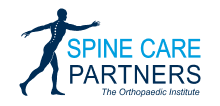The peripheral nerve serves as a pathway for signals between the brain and parts of the body such as muscles, skin, and organs. The peripheral nervous system includes the nerves and ganglia that branch out from the spinal cord and brain to send signals throughout the body.
Peripheral nerve stimulation (PNS) is the electrical stimulation of the peripheral nerves, generally intended to reduce pain. PNS can be delivered by implantable devices (using implanted electrodes) or by minimally invasive techniques (using surface electrodes).
How Peripheral Nerve Stimulation Works
PNS works by evoking a small, electrical current in the nerve to help reduce pain signals from reaching the brain. This essentially causes your brain to “filter out” the pain signals that it would usually register, decreasing the sensation of pain.
Conditions Peripheral Nerve Stimulation Can Treat
PNS is used to treat chronic pain conditions, including:
- Complex regional pain syndrome
- Neck pain
- Lower back pain
- Nerve pain
- Occipital neuralgia
Am I a Good Candidate for Peripheral Nerve Stimulation?
You may be a good candidate for PNS if you have severe, debilitating symptoms that have not responded to other forms of treatment. Those with infections, bleeding disorders, and other serious medical conditions may not be good candidates for this form of treatment. Your doctor will review your medical history and conduct a physical exam to determine whether or not PNS is an option for you.

